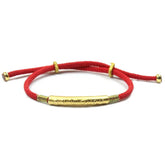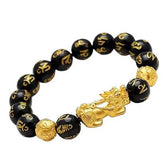7 Different Types of Buddha Statues & Their Meanings
Buddha statues symbolize distinct phases in the spiritual journey of Gautama Buddha, revered as the Buddha. Each pose and hand gesture (mudra) of a Buddha statue carries particular meanings that are applied in feng shui practices.
Buddha Statue Meaning
In feng shui, various Buddha statues serve to harness and channel chi energy within your living spaces, including your home, office, and garden. The array of Buddha statue styles and poses available offer numerous options. To make an informed choice before purchasing, it is beneficial to grasp the specific meanings and symbolic significance of each statue, especially in relation to the intended placement area.
Different Types Of Buddha Statues
Before deciding on your ultimate Buddha statue, take into account the variety of Buddha statues accessible. Each type carries unique significance and is suited for specific locations such as your home, office, or garden.
Meditation Buddha Statue Meaning

The Meditation Buddha, also referred to as Amitabha, the Buddha of Boundless Light, is depicted in a seated posture known as either the double or single lotus pose. In this portrayal, both hands rest gently in his lap, arranged in what is known as the cosmic mudra, a symbolic gesture of meditation. The posture itself forms a triangular shape, symbolizing stability and groundedness.
Further distinctive features of this representation include:
- The Buddha's eyes are either closed or partially closed, reflecting his deep meditative concentration.
- His hands are positioned with the right hand resting atop the fingers of the left hand, palms facing upwards.
- The tips of the thumbs lightly touch each other, forming an oval shape, which signifies the inward focus of attention.
This depiction encapsulates the serene and introspective nature of the Meditation Buddha, embodying the essence of mindfulness and inner peace.
The Meditation Buddha statue is widely chosen for Buddhist home altars due to its serene pose. Traditionally, it is recommended to orient the statue towards the east, symbolizing the direction where the Buddha meditated upon the rising sun in his quest for enlightenment. Alternatively, you may place the Meditation Buddha statue in any location that brings you peace and tranquility.
Laughing Buddha Statue Meaning

The Laughing Buddha is portrayed as a stout, bald man with a pot belly. Modeled after the cheerful Buddhist monk Hotei from the late 10th century AD, this Buddha statue differs from others in that it encompasses various poses and interpretations, influenced by the specific sector and facing direction where it is placed. Overall, the Laughing Buddha symbolizes abundance and good fortune.
- When the Laughing Buddha is depicted standing, it signifies welcoming and celebrating great wealth and happiness.
- In a traveling pose, it symbolizes prosperity and financial success.
- When seated, the Laughing Buddha represents balance and the maintenance of equilibrium in all aspects of life.
Also read:
Embracing Joy And Prosperity: The Laughing Buddha's Role In Feng Shui
Standing Laughing Buddha Statue
In Western culture, the Laughing Buddha statue is perhaps the most universally recognized and utilized. Also referred to as the Buddha of good luck, prosperity, or abundance, it portrays Buddha in his later years as joyful and possessing a large belly indicative of a fulfilled life. The statue typically depicts him seated or standing, often with his hands raised over his head, either holding a real or symbolic Ru-Yi pot—a vessel symbolizing abundance and plenty.
Affectionately known as "Happy," this statue is traditionally associated with rubbing its belly to enhance the luck it bestows upon you. For optimal placement, place Happy in your personal wealth corner or the southeast sector of your home. In an office setting, position the statue on the north wall so that it faces those entering, symbolizing welcome and prosperity.
Laughing Buddha With Beads or Wealth Ball
The Laughing Buddha depicted with beads or a wealth ball carries significant symbolism. The presence of beads symbolizes meditation and represents pearls of wisdom. Meanwhile, the wealth ball signifies not only material wealth but also prosperity in broader aspects of life.
The Laughing Buddha adorned with beads is ideally placed in the northeast sector, associated with enhancing education luck. Conversely, a Laughing Buddha statue featuring a wealth ball or multiple wealth balls should be positioned in the southeast sector, traditionally linked with fostering wealth luck.
For those aware of their Sheng Chi (wealth) direction determined by their Kua number, it's advantageous to orient the statue so that it faces this specific direction to maximize its auspicious influence.
Laughing Buddha Holding Bowl Meaning
The Laughing Buddha depicted with a bowl symbolizes the traditional life of a monk who relies on daily alms for sustenance. Buddhist monks walk through streets with their alms bowls, receiving offerings of food from the faithful each day. This act symbolizes their vow to renounce material possessions in their pursuit of enlightenment. In some depictions, the bowl may contain an orange or may be replaced with an ingot, both of which carry their own symbolic meanings.
For optimal placement, the Laughing Buddha with a bowl is best suited for your meditation room. If these spaces are not available, consider placing the statue in a reading nook or any area dedicated to contemplation and prayer. This ensures that the presence of the Buddha with a bowl supports a serene and reflective atmosphere wherever you seek solace and introspection.
Laughing Buddha With Fan
The Laughing Buddha statue with a fan is a symbol of happiness and joy. Buddhists often believe that waving a fan in front of this statue can dispel troubles and bring about a sense of peace. This depiction of Buddha encourages people to appreciate life and the blessings they have received. Additionally, if the Laughing Buddha is also holding a Wu Lou (gourd) of enlightenment suspended from a stick, along with a fan in one hand and adorned with a prayer bead necklace, it enhances the symbolism of health, longevity, and spiritual growth.
The Laughing Buddha statue adorned with a fan is ideally placed in your home office or business office. This placement is believed to dispel competition and ward off any negative intentions directed towards you.
If the Laughing Buddha statue also features a fan and a Wu Lou (gourd), it can be strategically placed in either the northeast sector, associated with education luck, or the southwest sector, symbolizing love and relationship luck. These placements are thought to enhance the positive energies related to learning and personal growth, as well as fostering harmonious relationships in your life.
Blessing Buddha and Protection Buddha Statue Meaning
The Blessing Buddha and Protection Buddha statues share a common pose but hold distinct significance in feng shui practice. This pose portrays Buddha imparting blessings with his right hand raised, palm facing outward—a gesture that not only bestows blessings but also dispels fear, often likened to a protective shield. Known as the Abhayamudra or gesture of fearlessness, it aims to instill a sense of reassurance and divine protection.
The Buddha's other hand typically rests peacefully in his lap, palm facing upward, symbolizing compassion. In certain depictions, this hand may extend outward in a gesture of comfort, emphasizing Buddha's role in offering solace and support.
Ideal locations for placing the Blessing Buddha or Protection Buddha statue include your home office and living room. These statues can be used as remedies for any area within or outside your home that has weak or afflicted chi. They are particularly effective in areas affected by negative flying star placements such as the #2 black star of illness and death, the #5 yellow star, and the #7 star of injuries and violence.
You can position either of these Buddhas in any sector of your home where you seek blessings or protection, enhancing the positive energy and promoting a harmonious environment.
Teaching Buddha Statue Meaning
The Teaching Buddha embodies wisdom, understanding, and the fulfillment of one's destiny. Also known as the Dharma Chakra Buddha, this statue is typically depicted in either a sitting or standing position. The sitting pose is the most prevalent, as it reflects the posture Buddha adopted while teaching—an essential phase in his life. This pose symbolizes the Buddha imparting the wisdom gained during his enlightenment at the deer park in Sarnath, Uttar Pradesh, India. Through this statue, Buddha shares his profound knowledge with his disciples.
The Teaching Buddha's hands are positioned in front of his chest, with the index fingers and thumbs touching to form a circle symbolizing the Wheel of Dharma—the union of wisdom and method. The other three fingers of both hands are extended.
Common hand gestures in statues include:
- The right hand's palm turned inward, while the left hand's palm is turned upward to receive knowledge.
- The left hand often rests in the Buddha's lap with the palm facing up.
- Both hands held in front with the thumbs and forefingers touching.
For optimal placement, the Teaching Buddha statue should be positioned in the northeast (education) sector of your home, office, or garden. This statue is particularly suitable for students and those focused on spiritual learning and personal growth.
Earth Buddha Statue Meaning
Also known as the Earth Touching Buddha or Calling Earth to Witness, this statue depicts Buddha seated on the ground with his right hand extended, fingers pointing towards the earth beneath him. This pose commemorates the pivotal moment when Buddha, faced with temptations from the demon Mara, resisted and ultimately attained enlightenment.
The Earth Buddha Statue can be placed in any sector where you feel challenged and need to strengthen your resolve. For instance, if you are facing difficulties in a relationship, placing the statue in the southwest sector can help reinforce your commitment and resolve. Similarly, if you find yourself becoming complacent at work, placing the statue in the north sector (career) can enhance your dedication and commitment to your job.
Reclining Buddha Statue Meaning
Buddha's perspective on transition from life to death reflects it as a shift into a different state of being rather than an end. If you find yourself in a period of transition, placing this statue inside your home or garden can be a meaningful choice.
To best harness the symbolism of transition, place the Reclining Buddha statue in the sector that corresponds to the specific area of change in your life. For instance, if you are transitioning jobs, consider placing the statue in the north sector of your home or office. If you are seeking a new love interest after a relationship has ended, position the statue in the southwest sector. For those adjusting to becoming an empty nester, placing the statue in the west sector can help ease this significant life transition.
Medicine Buddha Statue Meaning
The Medicine Buddha statue symbolizes health and healing. Often depicted in blue, reminiscent of ancient paintings, the Medicine Buddha is recognized for his pose: his right hand extends with the palm facing outward, pointing towards the ground. In some representations, this hand may feature a vine, flower, or other plant growing from it. His left hand rests in his lap, cradling a bowl filled with healing herbs, emphasizing his role as a healer and provider of medicinal knowledge.
In feng shui practice, the Medicine Buddha statue is employed to promote and safeguard health. For optimal effect, place a Medicine Buddha statue in the east sector of your home or office, which is associated with health luck. This placement enhances the statue's ability to bring healing energies and support well-being in your environment.
How to Place Buddha Statues?
Here are some guidelines for placing Buddha statues:
1. Avoid placing directly on the ground or in a bathroom, as both are seen as disrespectful placements.
2. If placing in your bedroom, ensure the statue is kept inside a closed cabinet when not being used for meditation.
3. Position the statue facing into your room, except when placed at the entrance of your home where it should face those entering.
4. Garden Buddha statues should always face towards your home to invite abundant blessings.
Types of Materials for Buddha Statues
Each sector in feng shui is associated with a specific element, and choosing the right material for your Buddha statue can enhance its effectiveness in your home, office, or garden. Consider the following examples:
1. Wood Element: Opt for a carved wooden Buddha statue to activate the wood element. Place it in the east or southeast sectors to strengthen wood energy. Additionally, you can use this statue to enhance the fire element in the south sector.
2. Metal Element: Select a Buddha statue made of bronze, copper, or other metals to activate the metal element. Position it in the west or northwest sectors to strengthen metal energy. You can also place this statue in the north sector, as metal produces water in the productive cycle.
3. Earth Element: Choose a Buddha statue crafted from clay or carved from crystal to activate the earth element. Place it in the northeast or southwest sectors, as well as in the center of your home, to strengthen earth energy.
By aligning the material of your Buddha statue with the corresponding element of each sector, you can harness its beneficial energies and promote harmony and balance in your surroundings.
Wrapping Up
In summary, Buddha statues represent distinct stages in Gautama Buddha's spiritual journey and hold deep symbolic meaning reflected through various poses and hand gestures (mudras). These statues are utilized in feng shui to channel and enhance chi energy in homes, offices, and gardens. Understanding the specific meanings and symbolic significance of each statue helps in making informed choices about their placement, ensuring they contribute positively to the intended environment. Each type of Buddha statue, whether it's the serene Meditation Buddha or the joyful Laughing Buddha, serves as a reminder of spiritual principles and aids in creating harmonious and balanced spaces.








Leave a comment
All blog comments are checked prior to publishing